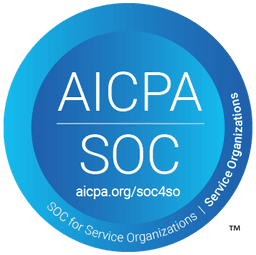May 02, 2024
Revenue leakage is more costly than burning cash in your company’s parking lot—really
Join Todd Gardner as he sheds light on Revenue Leakage in SaaS, uncovering its financial impact and sharing strategies to tackle it.
When pricing becomes more complex and dynamic, revenue leakage is bound to happen. At a recent dinner of 15 SaaS CFOs, I asked the group how many thought they had revenue leakage. All the hands went up.
The ramifications of revenue leakage are:
- Less Revenue
- Less Profit
- Less Cash
- Less Growth
- Less Value
Revenue leakage is the ultimate sin.
Think about the value chain and the customer journey. You built the product, created demand, found a prospect, guided them through the pipeline, got them to agree to pricing, and then implemented and supported the solution. You did all the right things and incurred all the costs, but under the covers, you are billing the customer less than you both agreed to.
The leaked revenue never hit your P&L, so you got no credit for the ARR or the growth but bore all the expenses. It’s even worse than a discount because the customer does not know they are getting it.
The Financial Impact of Revenue Leakage
SaaS businesses are generally valued based on a multiple of ARR, and revenue leakage not only lowers ARR but can also lower the valuation multiple by depressing growth and profitability. Three to five percent revenue leakage could easily reduce operating profit margins by 50% or more. The valuation impact reference below does not even consider the potential impact of leakage on the valuation multiple. Revenue leakage is valuation kryptonite.
Over five years, a $10 million ARR company growing by 20% but with 3% revenue leakage will have $2.2 million less cash to reinvest, be less profitable by that same amount, and be valued at least $5.1 million lower in a sale or fundraise. (Assuming no impact in the valuation multiple.) After ten years, revenue leakage will depress the valuation by $12 million. Click on the revenue leakage calculator at the bottom of this page - to download my calculator.
Types of Revenue Leakage
Based on CFO conversations over the years, revenue leakage generally falls into three categories.
Capability Constraints:
Many companies have built pricing structures they can’t implement at scale. This could include not properly enforcing seat licenses, not tracking or billing overages, not tracking specific metrics, or structuring extra-large pricing tiers to avoid actual usage tracking. You know you are losing revenue and how it’s happening, but you probably don’t know the scale, and it can’t be fixed without investing in your capabilities – either systems or people.
Errors:
Error-driven leakage is also common. This results from manual processes trying to keep pace with complex pricing across an ever-larger customer base. You have the inputs, but turning usage data into invoices is complex and bespoke. Sometimes, the errors are systemic across a group of customers, and sometimes, they are one-offs, but they are typically the result of a really complicated spreadsheet buried somewhere in the billing process.
Unknown Revenue Leakage:
Is also real and even trickier. In these cases, CFOs sense they are losing revenue because their pricing is complex, but they don’t know how or why it’s happening. It's also entirely possible that CFOs think they don’t have leakage when they do.
Identifying Leakage
Sales-led businesses with complex and customized pricing are the most at risk for revenue leakage. Typically, these companies have a complicated manual system, typically a spreadsheet, that calculates customer invoices.
If your business has one of these spreadsheets, periodic audits are important. Start by sampling customer contracts, reconstructing historical bills one at a time, and seeing if they match the invoices.
At some point, typically around 100 customers, a manual process becomes too time-consuming and error-prone.
In addition, if you have had at least one instance where a bill was incorrectly calculated, there is a good chance you have a more significant problem. Systemic cases of erroneous bills usually don’t materialize without some warning.
What About Overbilling
In many cases of revenue leakage, the chances of overbilling are equal to those of underbilling. So, it’s possible that an audit or new system will identify overbilling that needs to be addressed. And while this might be financially painful to unwind, overbilling your customers is not a sustainable practice. At a minimum, it will lead to ill will and churn and could result in fines and restated financial statements.
Communicating overbilling to your customers must be quick and complete. You must clearly document the amount and timing of the overbilling and provide detailed backup schedules.
Should you reimburse in cash or future credits? The short answer is that this was your mistake, and you owe your client cash -- immediately. Don’t compound the problem by getting cute with the payback. That said, you could offer them incentives to take credits. For every dollar you owe them today, you might credit them $1.25 to be spread out over their next contract period. Cash or future credits should be their choice.
Financial Accuracy
Both overbilling and underbilling represent errors in your financial statements that can have serious consequences.
Financial audits may identify the issue and, if material, require your company to restate revenue. This is a time-consuming process that also erodes confidence in the overall accuracy of financial reporting. That said, annual audits are not set up to identify billing errors. Most audit testing assumes the bill is correct, so don’t rely upon an audit to catch revenue leakage problems.
Revenue leakage is often unearthed in a fundraising, M&A, or IPO process, which is arguably the worst possible time. Private equity firms and even VCs perform Quality of Earnings Reports (Q of E Reports), which deeply dive into every aspect of a company’s financial operations. For software businesses, revenue gets the most scrutiny and is reconstructed from contracts to payment. Improper invoicing identified in a Q of E report will hurt fundraising or an M&A event, so you need to identify these issues beforehand.
What to Do
If you are a sales-led business, you are at significant risk for revenue leakage as your pricing evolves and your customer base grows.
Sampling and testing invoices based on customer size and complexity should be performed annually and can be outsourced. Identifying or avoiding revenue leakage will pay for this exercise many times over.
Systems and processes can also help minimize the chance of revenue leakage. On the process front, instilling more pricing discipline in the organization will certainly help. Three pricing packages are easier to invoice than thirty packages. Moving away from manual processes and fix revenue leakage with implementing a dedicated metering and rating system will also be necessary at some point. This will not only eliminate errors but also increase efficiency.
Download this resource

You might also like…
Subscribe to Counting Tokens
Actionable insights on AI revenue, billing, and finance.
Watch our webinar on "Decoding Revenue Leakage"
Join SaaS finance expert Todd Gardner, Onfido’s Senior Operations Manager Gordon Laing, and m3ter CEO Griffin Parry for an essential webinar. Designed for Billing and Finance operations teams, this session addresses the critical issue of revenue leakage and its potential threat to your business.
Watch Now


